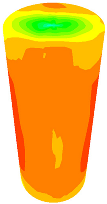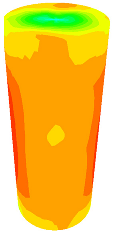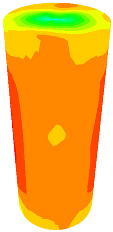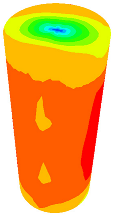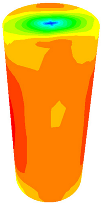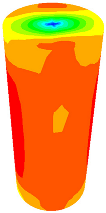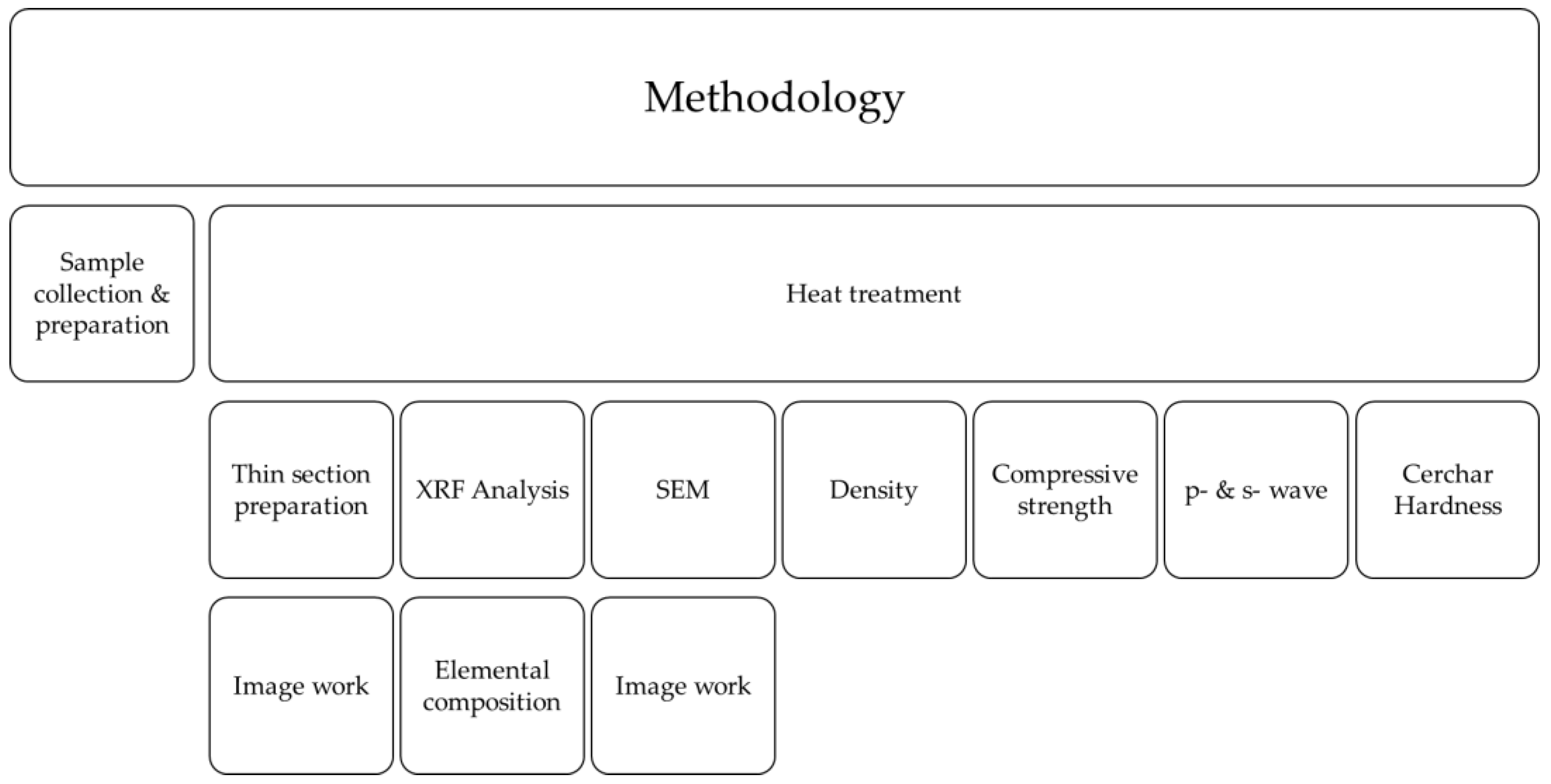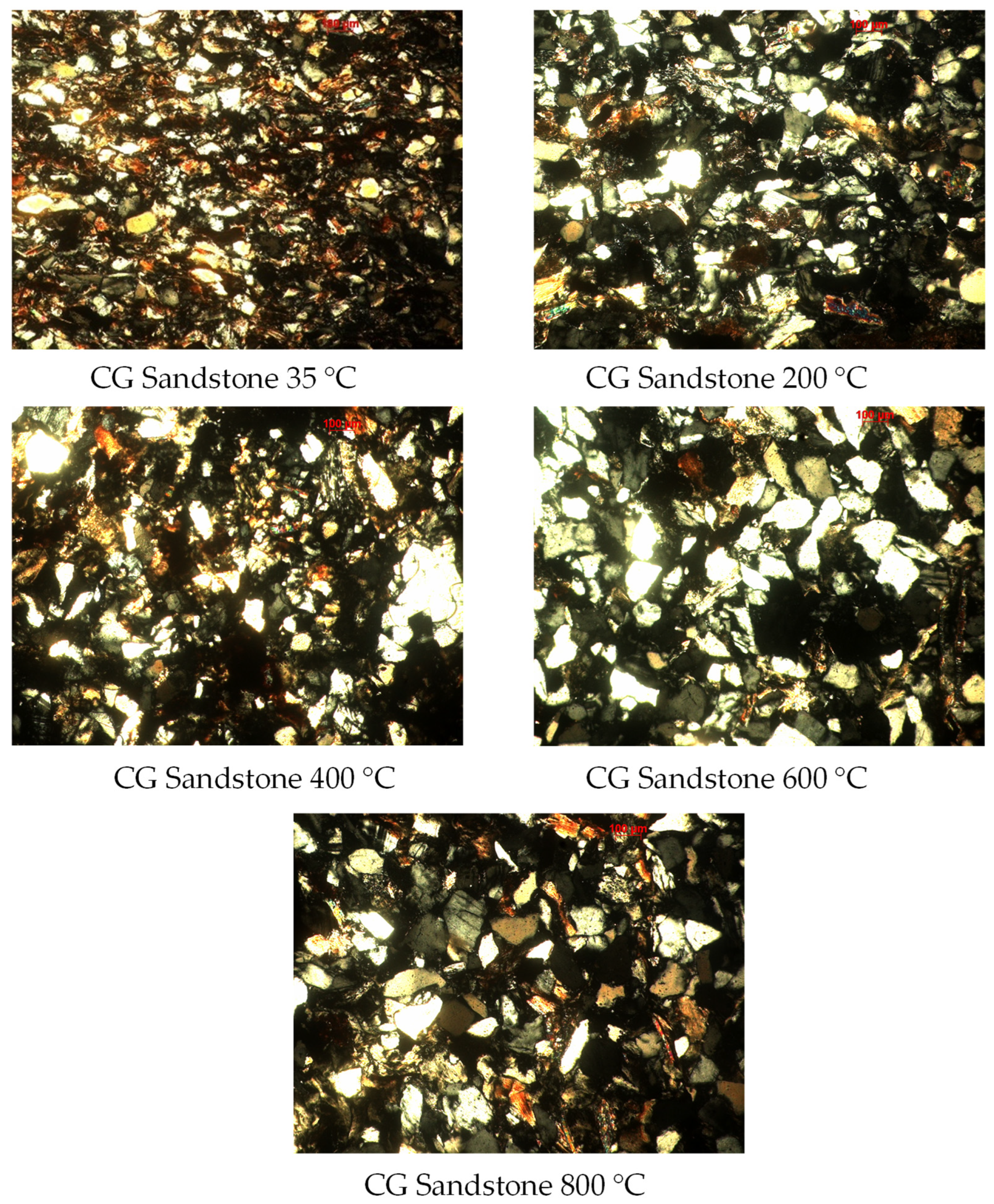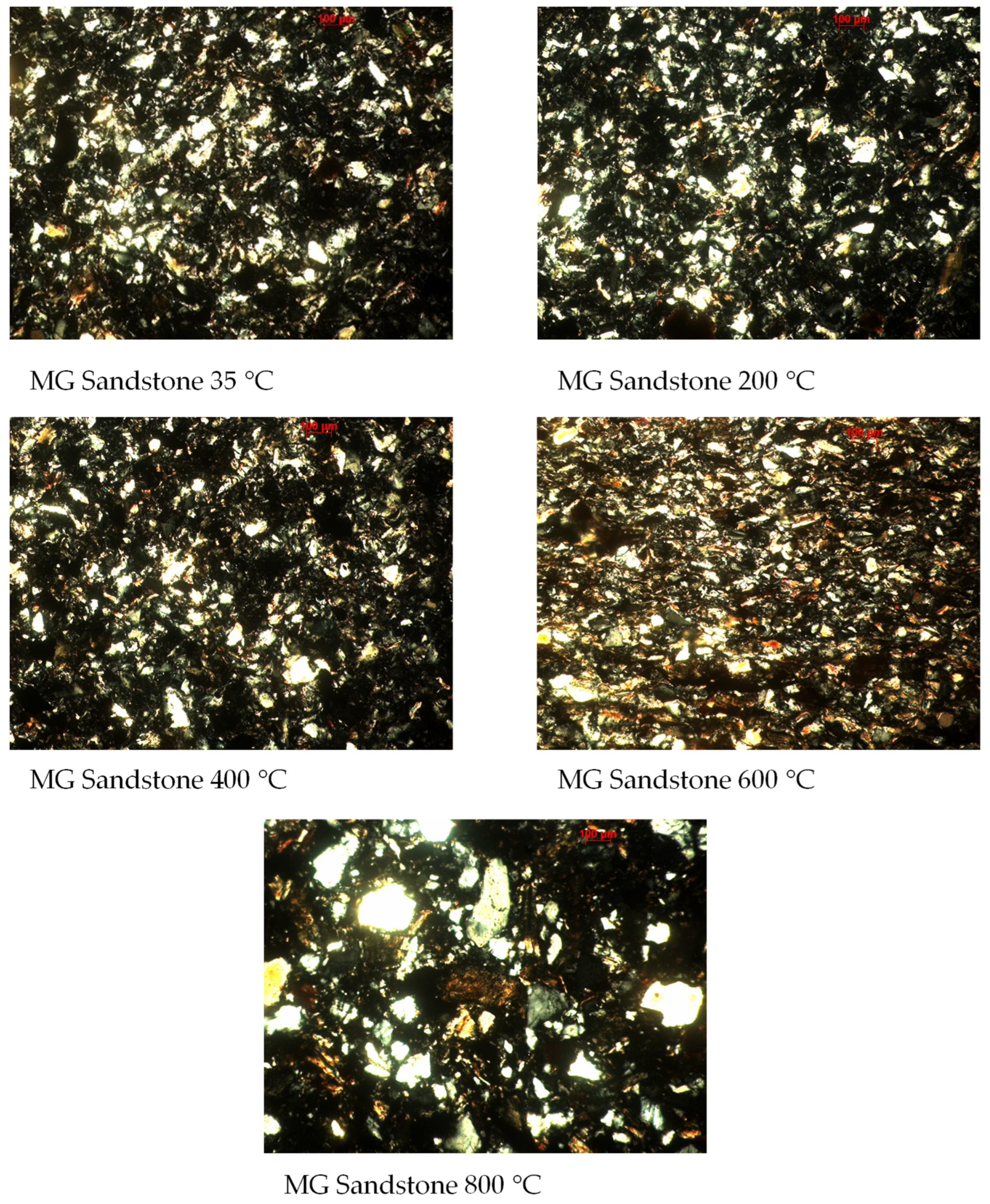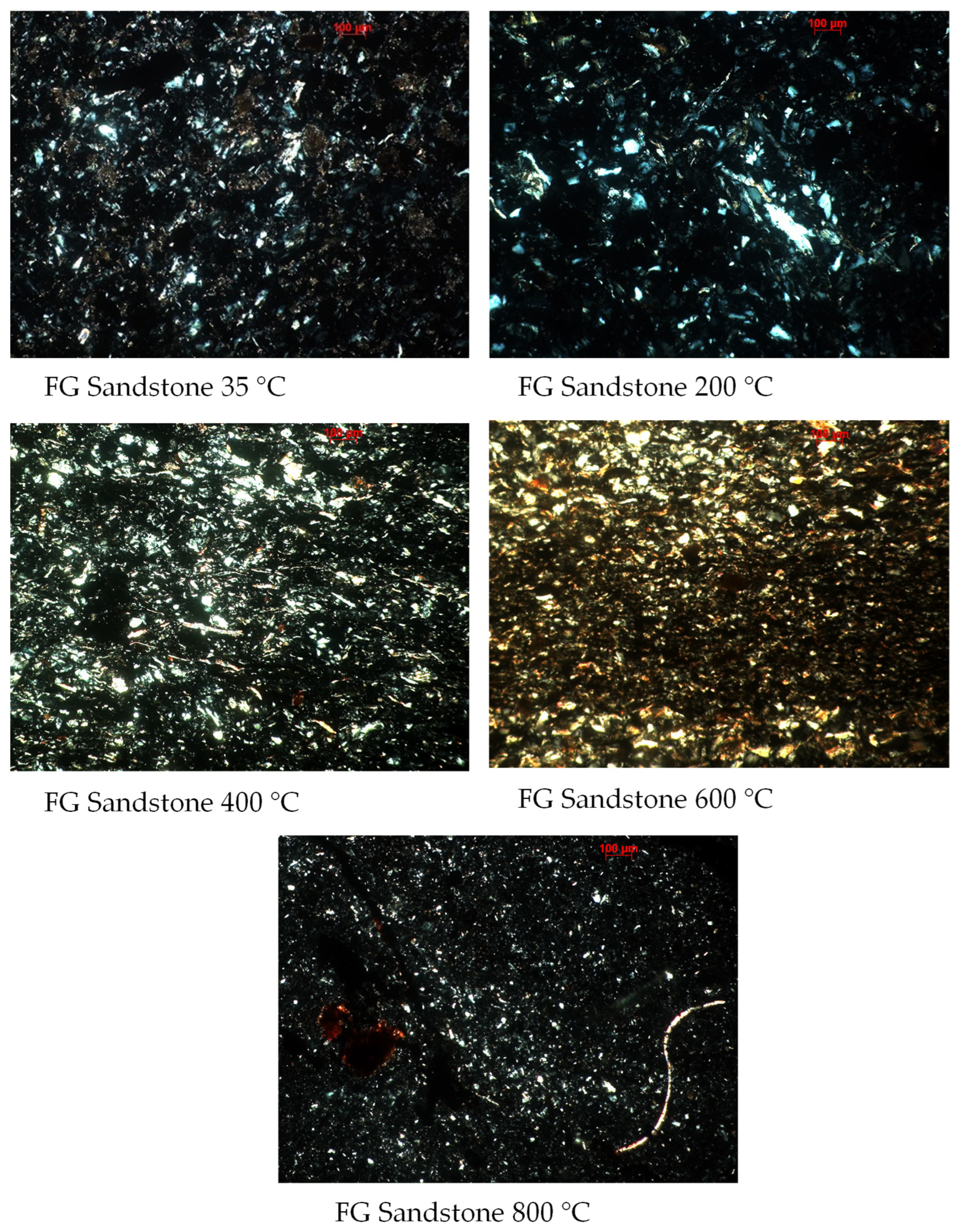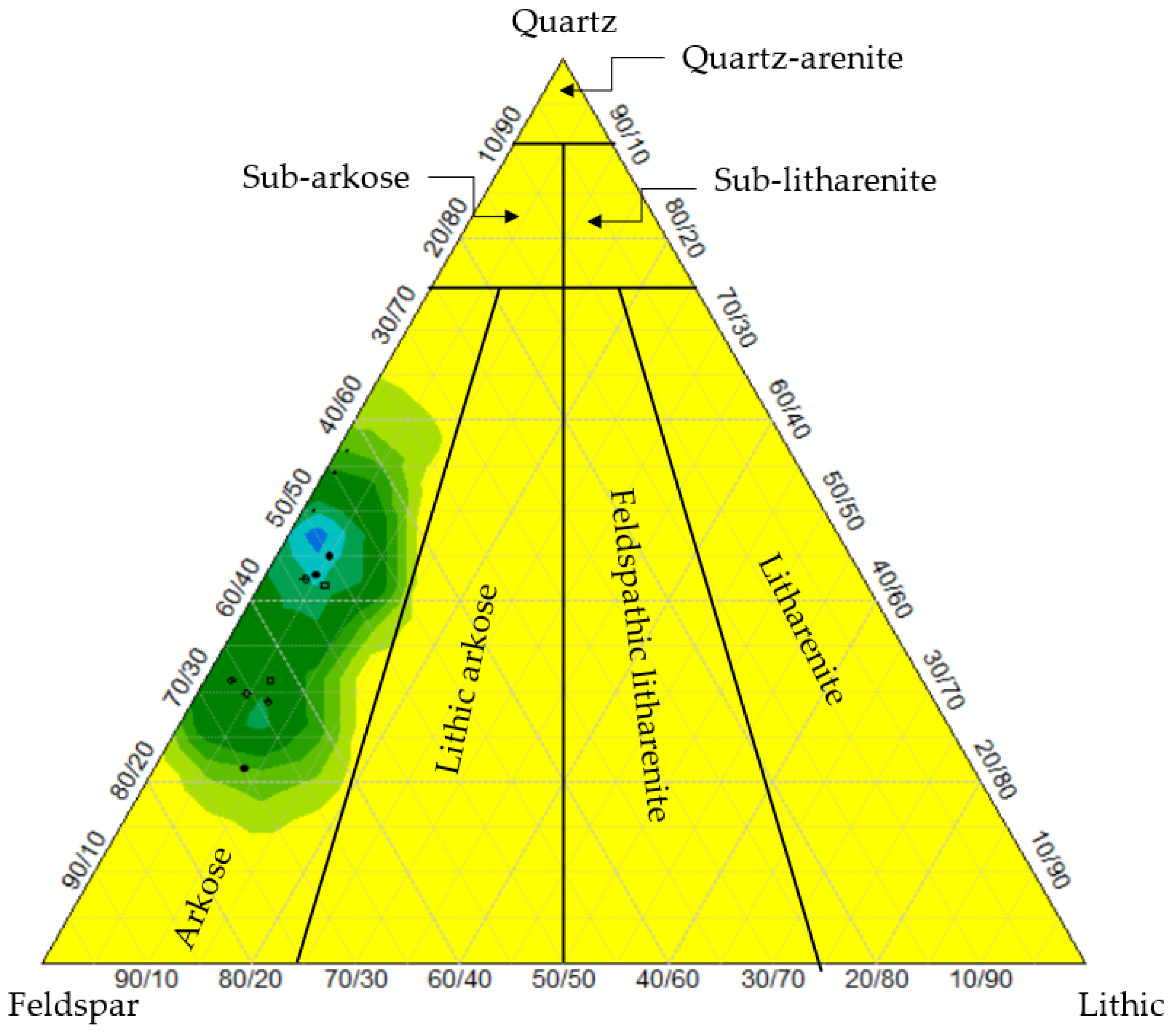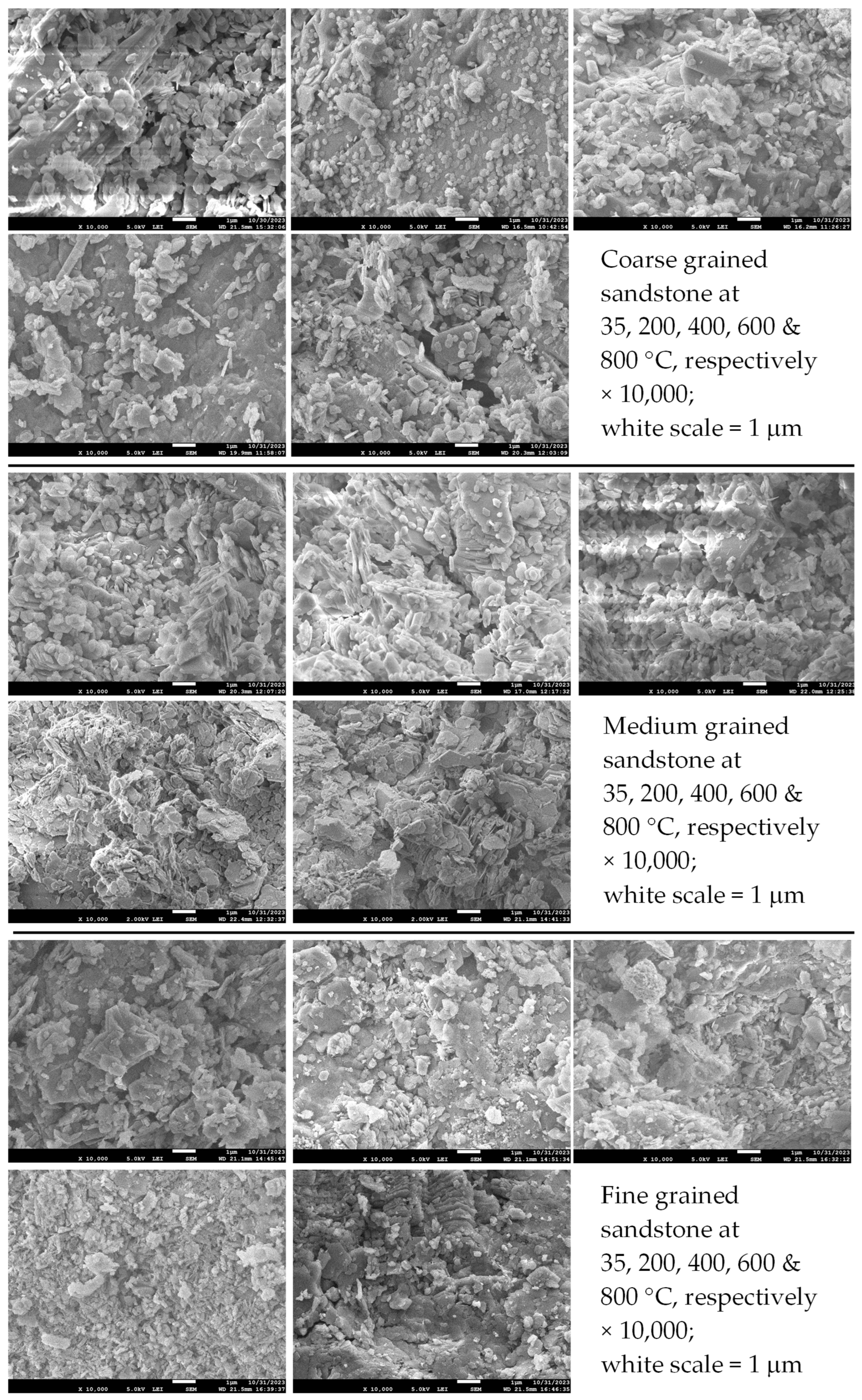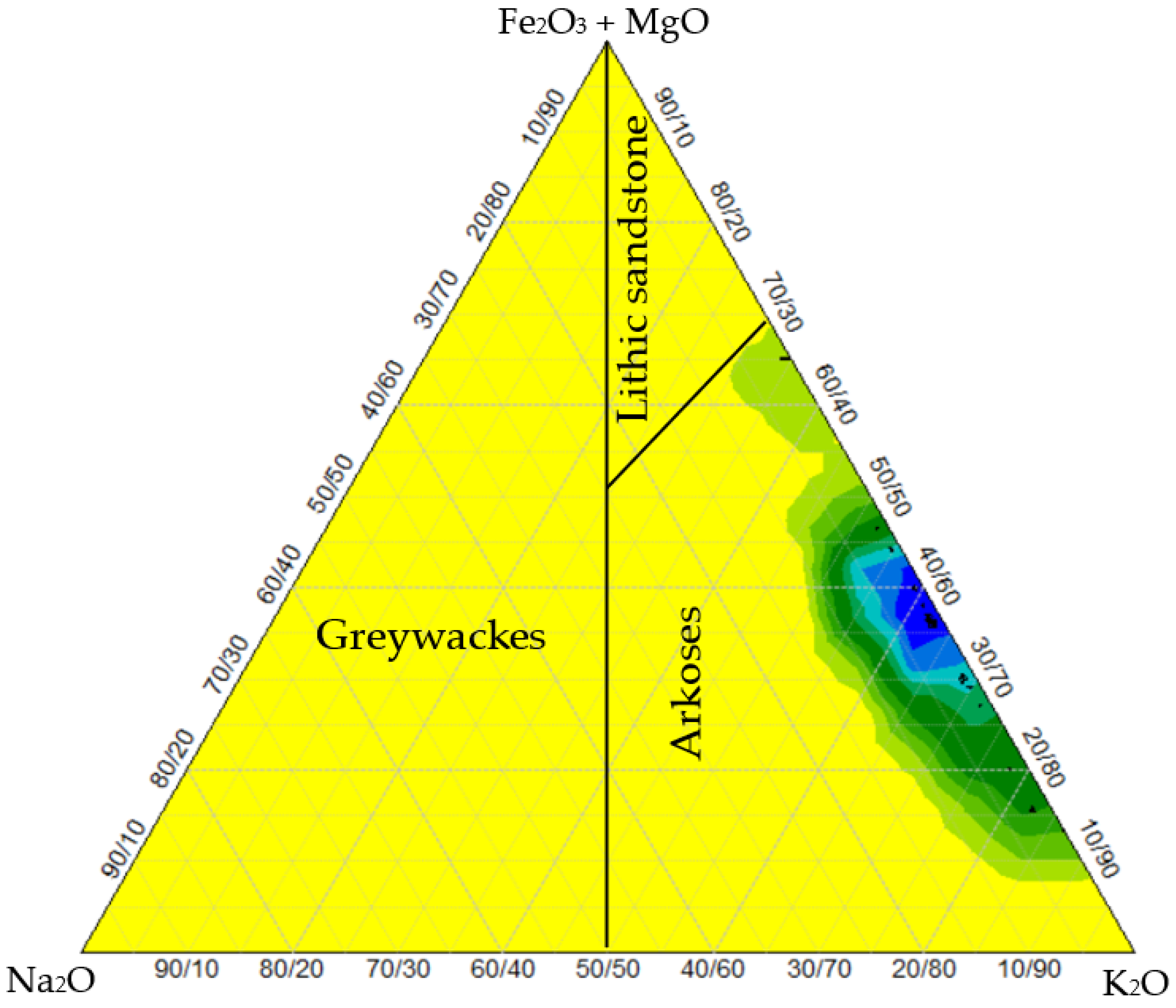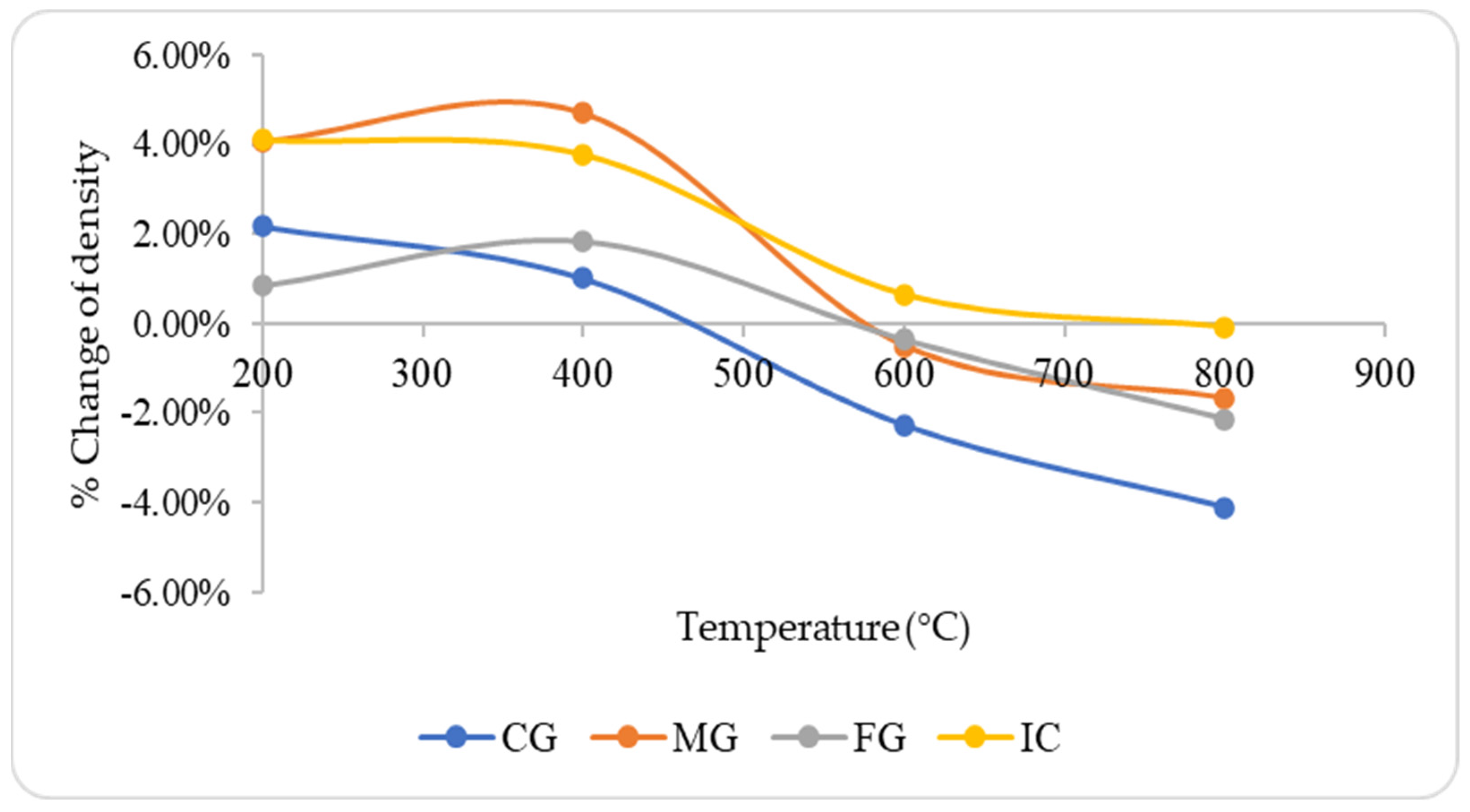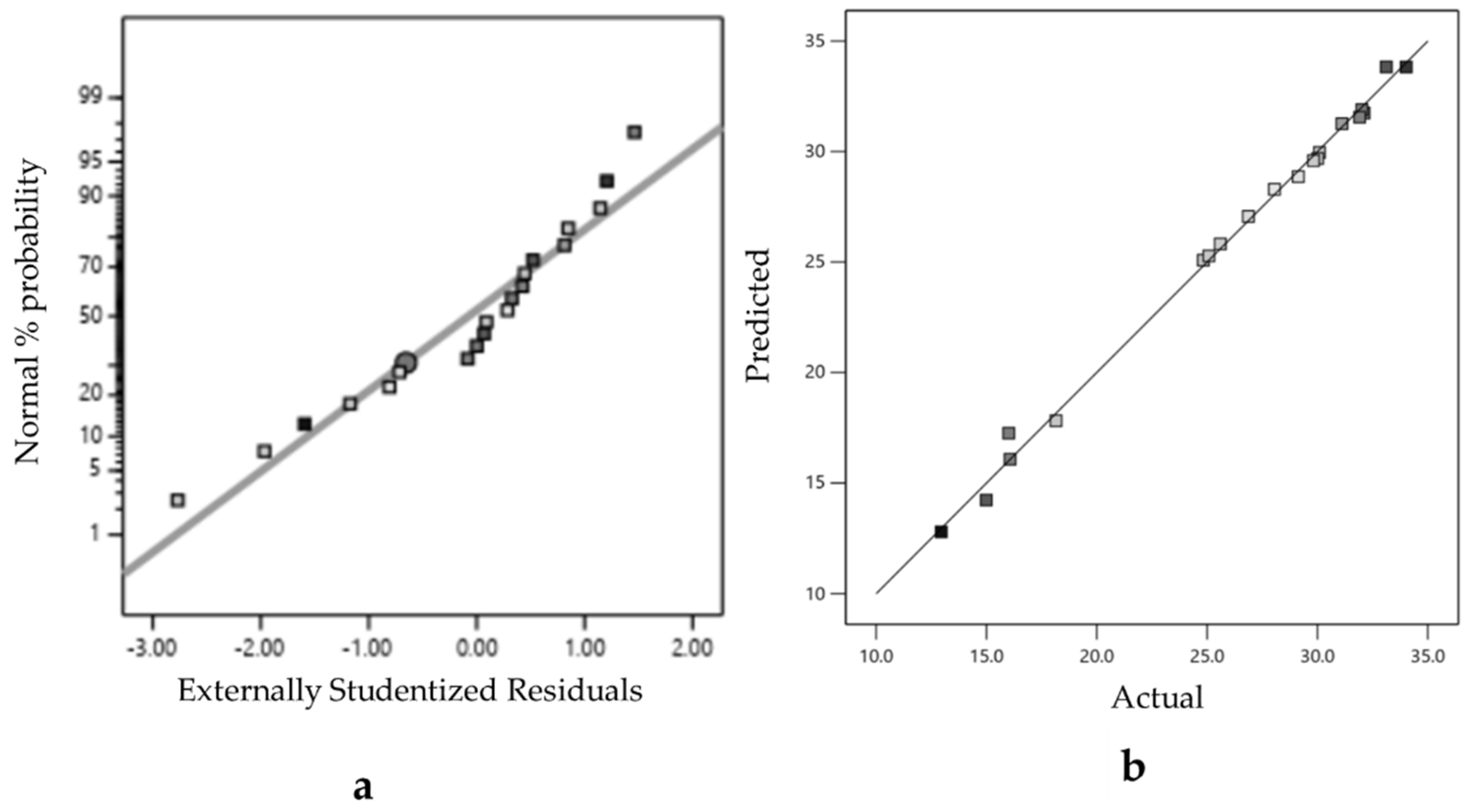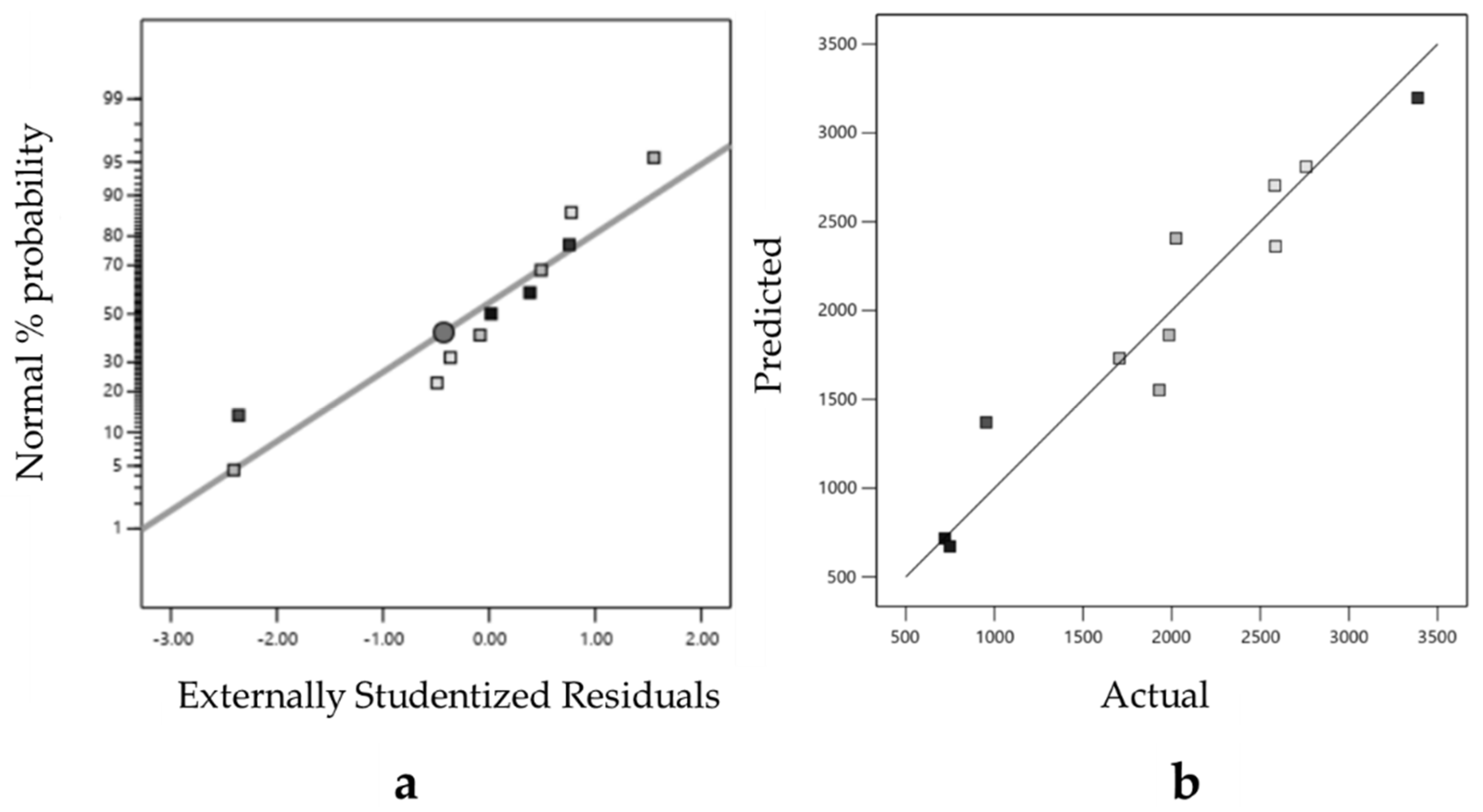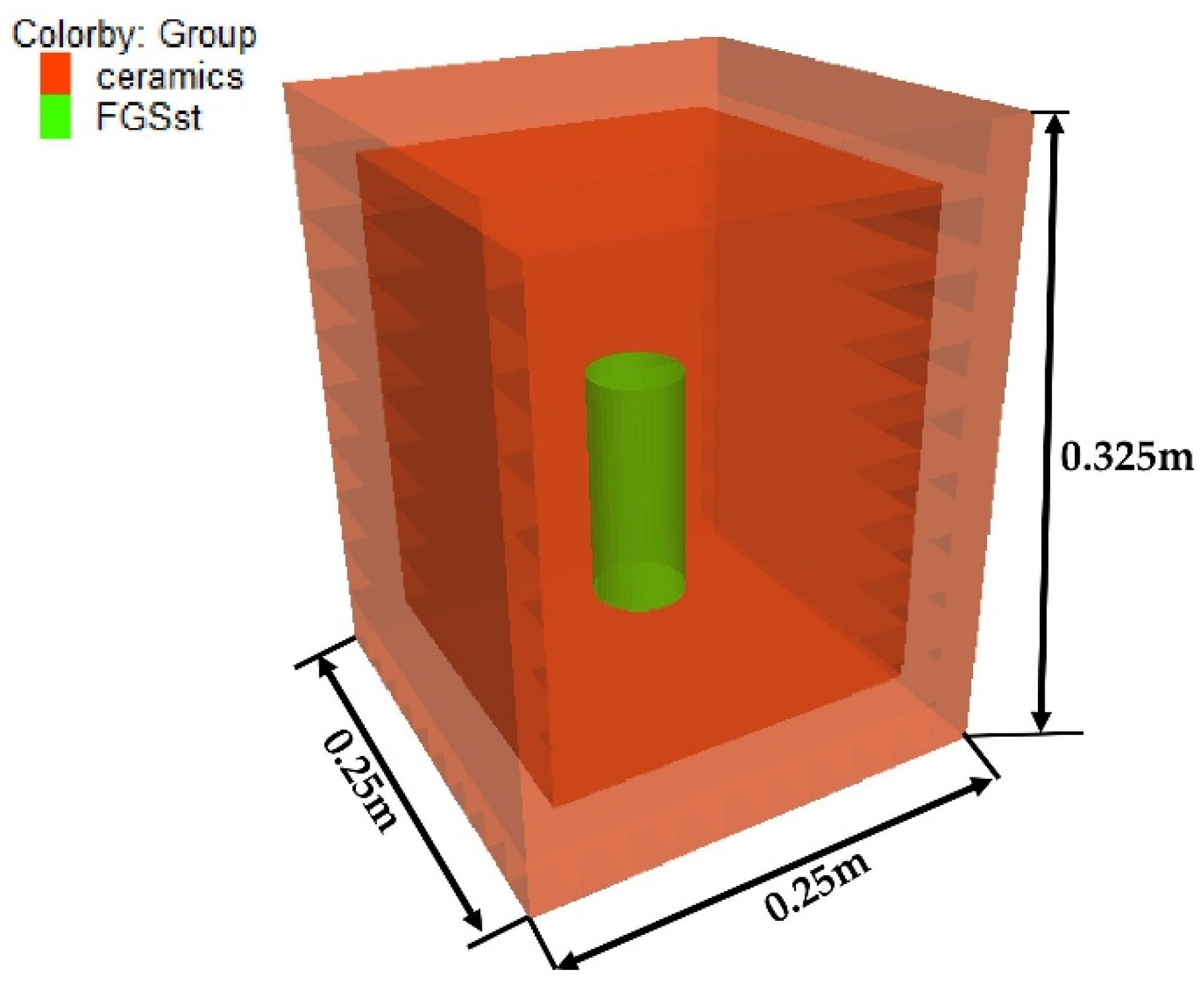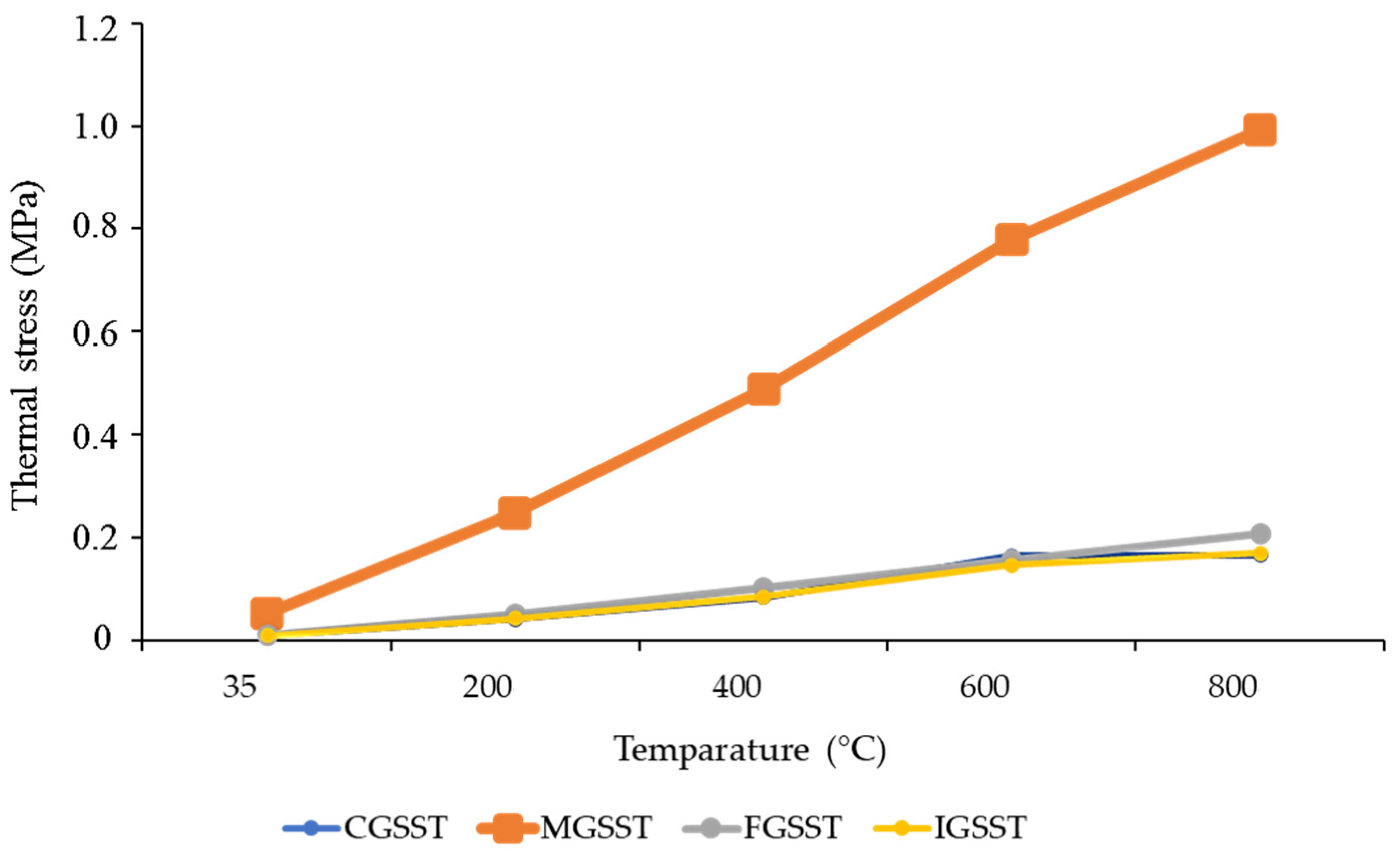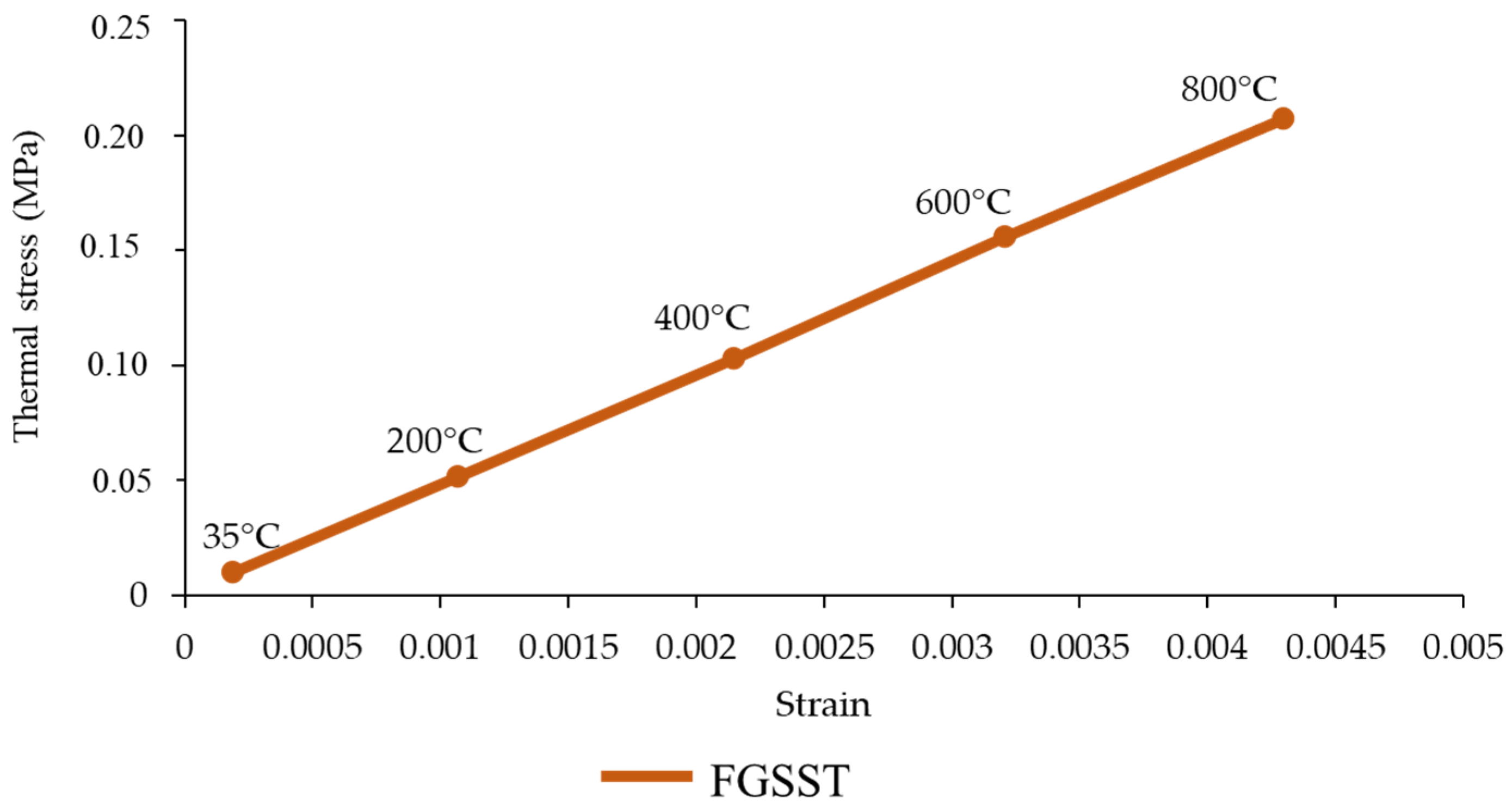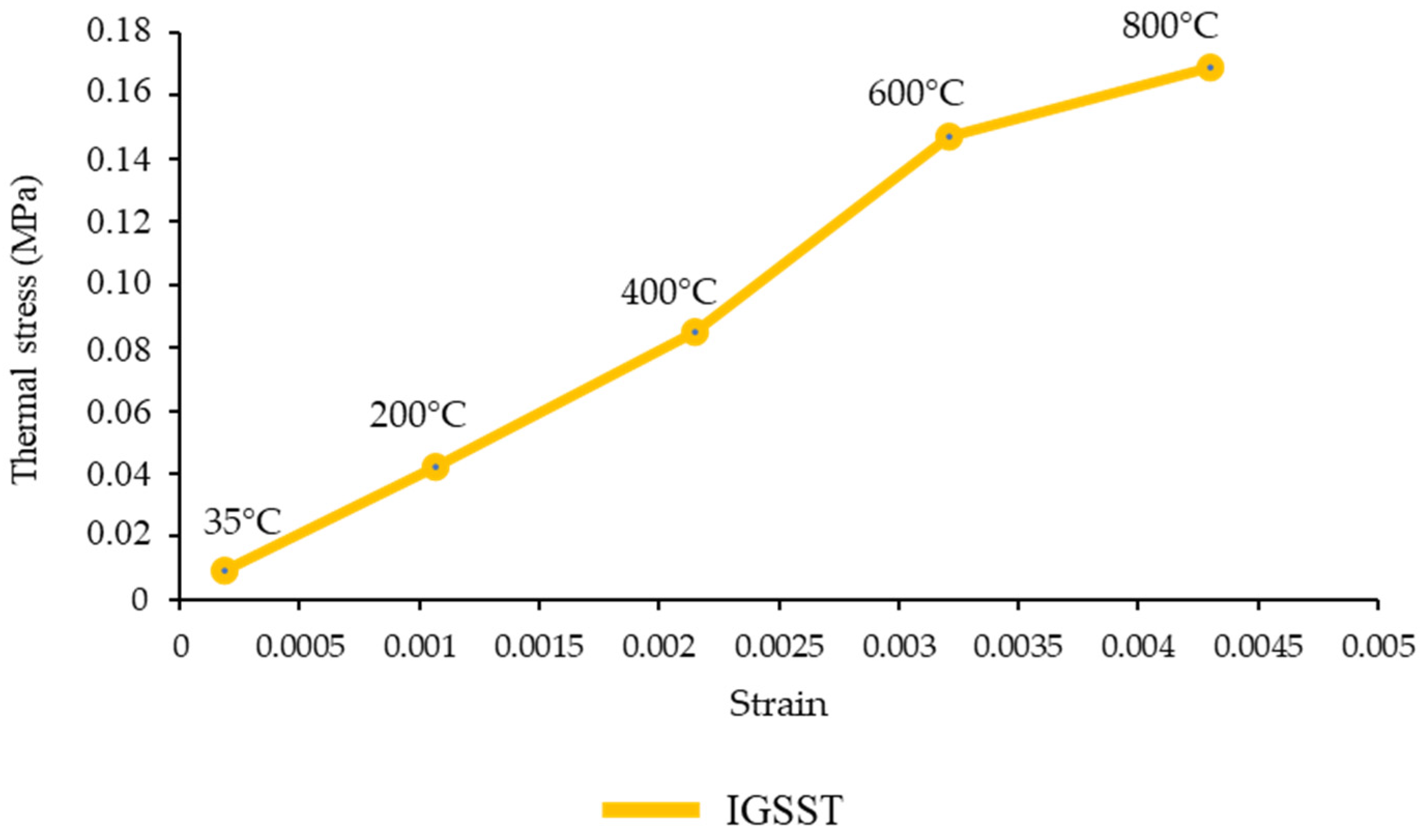1. Introduction
Rocks, composed of mineral aggregates, form most of the Earth’s crust and play a critical role in various geological and engineering processes. These rocks are classified into three primary types: sedimentary, metamorphic, and igneous, based on their genesis. In mining engineering, however, the focus shifts from their origin to their physical and mechanical properties, which are critical for engineering designs. Sandstone, a sedimentary rock with a coarse-to-fine-grained texture, is composed of sand-sized particles bound by minerals like silica, calcium carbonate, or iron oxides. It exhibits a wide range of variations in texture and physical properties. There is significant literature on the effect of high temperature on different types of rocks. Among these, the granites rank at the top of the list.
Su et al. [
1] observed that elevated temperatures cause sudden rock fractures, with kinetic energy increasing up to 300 °C before sharply declining between 300 °C and 700 °C. Similarly, Sheng-Qi et al. [
2] noted a decrease in strain up to 600 °C, followed by a rapid increase to 800 °C, resulting in ductile failure and tensile cracks under axial stress. In a study focusing on fine-grained granite [
3], it was reported that the stress threshold decreases, leading to crack propagation detected by acoustic emission (AE) signals with the increase in temperature. The porosity of marble increases significantly with temperature, typically in the range of 0.5% to 1.98%, rising by about 202% at 600 °C [
4]. Additionally, elevated temperatures lead to the evaporation of water molecules from the minerals [
5]. Drawing from experimental data, Vagnon et al. [
6] established a fundamental correlation between porosity and temperature while noting that porosity rises by up to 3% at 600 °C. An investigation was conducted on granite through a triaxial compression experiment [
7], and a permeability model based on numerical simulations was developed to analyze how heat treatment, up to 800 °C, affects crack-induced permeability fluctuations in granite [
8]. Moreover, Young’s modulus decreases as the temperature increases during instances of strain bursts in such samples. Alterations in Young’s modulus and the yield point impact the distribution of strain [
9], and, at 800 °C, granite’s stress–strain distribution becomes nonlinear, reaching its yield point. Higher temperatures cause gradual deformation and thermally induced cracks, influencing fracture propagation [
10]. The variance in elastic modulus could be attributed to the heightened density of fractures and the development of thermal cracks during the heating process [
2]. Also, gradual cooling, for instance, decreases Poisson’s ratio by 25% towards 500 °C, while rapid cooling methods reduce it by 20% up to 300 °C [
11]. Li and Liu [
8] investigated sandstone for UCS and microscopic properties. Their experimental data, when compared with numerical simulations, reveal a strong correlation. Sun et al. [
12] observed distinct phases in the tensile strength behavior of sandstone. The first phase spans from room temperature to 300 °C, during which the tensile strength decreases from 5.69 MPa to 4.62 MPa. The second stage, from 300 °C to 600 °C, witnesses a 53.14% decrease in tensile strength. The third phase, ranging from 600 °C to 800 °C, shows minimal reduction in tensile strength, considered an intermediate phase for sandstone. From 800 °C to 900 °C, the tensile strength rapidly declines by 73.32%, due to varying mineral expansions and water evaporation, which causes crack formation. While temperature increases strengthen the rock up to 500 °C, beyond that, weakening effects dominate tensile strength [
13]. Fan et al. [
14], through scanning electron microscopy, revealed density variations and fluctuations in
p-wave velocity (
vp) and dynamic energy up to 800 °C. The findings show, that as temperature rises, the rock’s internal structure becomes more complex, resulting in gradual damage, as supported by [
3]. Numerous models, as outlined by Yagiz [
15], correlate
vp with other mechanical properties of rocks. Mohd-Nordin and Mohamed [
16], categorized
vp in granite as follows: below 2.5 km/s (extremely low), 2.51–3.5 km/s (low), 3.51–4 km/s (moderate), 4.1–5 km/s (high), and above 5 km/s (very high). Before thermal treatment, the standard deviation of
vp is found to be minimal [
5]. The decline in
vp is mainly due to the expansion of pore volume and initial fractures from water evaporation as temperature rises. However, as the temperature continues to increase, crystalline growth in granite reduces fracture formation, leading to a slower decline in
vp, as explained by Chen et al. [
17]. In sandstone, Poisson’s ratio decreases linearly from 0.248 to 0.211 up to 400 °C, but increases to 0.292 at 800 °C due to the heterogeneity of the rock [
18].
Sandstone shows distinct behavior, with peak strain increasing by 68% compared with marble and granite [
1]. The density of rocks decreases gradually after heat treatment [
4], as high temperatures weaken molecular bonds, causing the rock density to decrease. Significant weight loss occurs between 600 °C and 800 °C, leading to noticeable density changes [
5]. At high temperatures, an acidic solution significantly impacts the physical, mechanical, and microstructural properties of red sandstone, notably affecting its mass, porosity,
vp, thermal conductivity, and strength [
19]. Below 1100 °C, the glossiness and porosity of yellow sandstone increases, while conductivity, hardness, and color brightness decrease due to the melting of the binder. Above 1100 °C, the melting of clay minerals, quartz, and feldspar particles causes a significant increase in brightness and hardness. [
20]. In rock engineering, rock masses may experience thermal stress due to sudden temperature changes, a phenomenon known as thermal shock [
21]. High temperatures significantly affect the porosity of red sandstone, and understanding this impact is essential for applications like coal mining with underground gasification, geothermal energy, and deep burial of nuclear waste [
22,
23].
Yang et al. [
24] exposed sandstone blocks to temperatures of up to 800 °C and show a direct correlation between temperature increase and rock failure and crack formation along the sidewalls of the pre-drilled sections. Numerical simulations show a strong link between the rate of temperature increase and crack formation. At around 400 °C, sandstone exhibits brittle failure, marked by macroscopic fracture patterns. Jiang and Jiang [
25] studied the behavior of sandstone up to 700 °C to find changes in permeability and crack propagation through microscopic and numerical analysis for fracture angles. Li et al. [
26] subjected sandstone to heat treatment up to 800 °C and show that thermal expansion of rock particles increases density and alters deformation resistance. However, beyond 500 °C, the mechanical properties deteriorate, causing hot cracking in the sandstone specimens.
A review of previous research on effects of temperature on physico-mechanical properties of sandstone is summarized in
Table 1.
Despite such cited research, there is a notable lack of studies focusing on sandstone from India, a region with unique and diverse geological settings. The mineral composition, texture, and mechanical properties of Indian sandstone differ from those studied in other parts of the world, making it essential to investigate its behavior under heat treatment in the Indian context. Moreover, there are no studies on the effect of temperature on the cutting characteristics of the sandstone. With its spectrum spanning from fine-grained to coarse-grained textures, the physico-mechanical properties of sandstone render it versatile for diverse applications, ranging from dimensional stone usage to construction and ornamentation. Notably, sandstone holds significance in coal mines, frequently constituting a substantial portion of the geological layers. In mining operations, understanding the behavior of sandstone becomes crucial, particularly when it comprises the roofs of coal mines accompanied by the spontaneous combustion of coal. Also, the recent efforts in underground coal gasification (UCG) have given a new dimension to excavation and cuttability in fiery seams and can be a challenging task during actual operations. Given its widespread use, understanding how heat treatment influences the physical, chemical, and dynamic properties of sandstone is crucial, especially its abrasive nature, which has significant implications for mining operations, particularly in the mechanical cutting domain.
The variability in mineral content and geological history across different regions of India means that sandstone from these areas could exhibit unique properties not captured in the previous research. Therefore, there is a need for studies that focus on the heat treatment effects on sandstone from India, particularly its physical, chemical, and dynamic properties, to fill this knowledge gap. Thus, a comprehensive study was undertaken to evaluate the impact of heat on the microscopic, sub-microscopic, chemical, and physical properties (both static and dynamic) of sandstone samples, with validation through numerical modeling results. The hardness characteristics identified through the Cerchar hardness test are unique to this paper.
5. Conclusions
To understand the heat treatment effects on sandstone, particularly its physical, chemical, and dynamic properties, an extensive research study was conducted utilizing physical tests like density, UCS, p-wave velocity, XRF, and SEM and corroborated with numerical modeling.
Based on the mineral composition, the sandstones classified as arkosic types were further confirmed by the basic elemental classification adopted from the XRF analysis data. No major changes were observed in the elemental composition. The microscopic sections showed minor changes in the mineral domain, but SEM images revealed that the changes were more of a sub-microscopic nature. The analysis also showed the formation of microcracks due to exposure to high temperatures. The IC sandstone, however, could not be analyzed properly as it flaked on heating and provided unusual values.
The analysis also revealed that the CG sandstone’s diameter increased from 0.04% to 1.76% between 200 °C and 600 °C, then decreased to 0.79% at 800 °C. FG and IC sandstone followed a similar pattern, with consistent growth up to 600 °C and a decrease of about 1.42% at 800 °C. MG sandstone showed a different behavior, decreasing in diameter after 400 °C, then increasing to 1.38% at 800 °C.
The compressive strength initially increased with the higher temperatures, reaching approximately 24.09% at 200 °C. Beyond this point, the rate slowed, resulting in an increase of about 12.94% at 400 °C. Near 600 °C, an inflection point occurred, followed by a sharp decline of around −11.79%. Finally, at 800 °C, the compressive strength decreased further by approximately −6.37%, pointing to the initial release of volatiles, and changes in microstructures influenced the behavior at later stages of heating.
Also, as the temperature increased, the p-wave velocity decreased because of the expansion in the material’s pore volume and was related to the density of the material at such temperatures. This decrease was consistent and showed minimal variation over a narrow temperature range, making p-wave velocity a reliable indicator for assessing the impact of temperature on rock properties. CHI showed minor changes during heating but, in the case of IC sandstone, it increased rapidly from 4.1 to 12.3 up to 400 °C, then sharply decreased to about 3.4 at 800 °C, indicating a nonlinear hardness pattern and possible erratic sample behavior due to flaking.
The thermal stress strain relation of different sandstone samples during the heating process was further numerically modeled with FLAC3D (software, V.5.0). A linear increase in peak stress with rising temperature across all sandstone types was observed in the analysis. Moreover, MG sandstone exhibited the highest peak stress distribution, reaching 0.99 MPa at a temperature of 800 °C, compared with the other samples.
Multivariate predictive models were also developed for density, UCS, p-wave velocity, and CHI using ANOVA, which demonstrated significant correlations and a high degree of correlation. These models could provide valuable insights for decision making in fiery conditions, in situ coal-to-gas conversions, and mechanical excavations of coal measure rocks. In future, the experiments could be conducted with more variation in commercial rocks and experimental condition.

